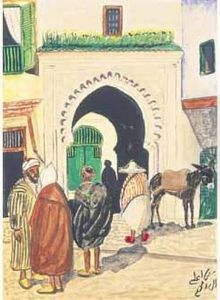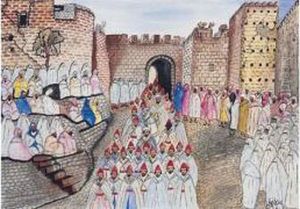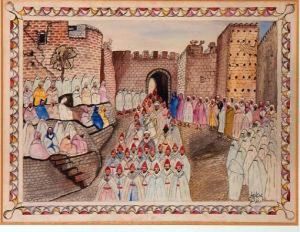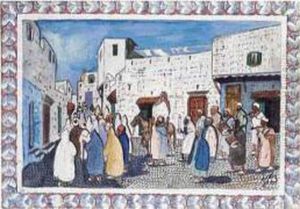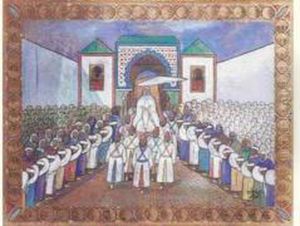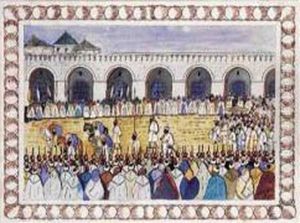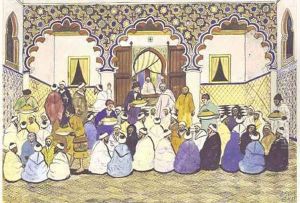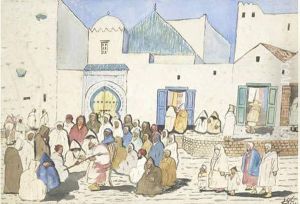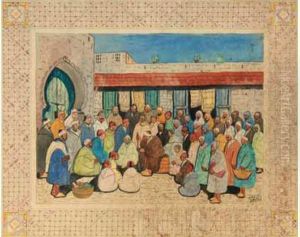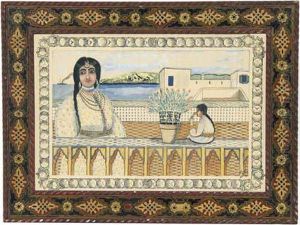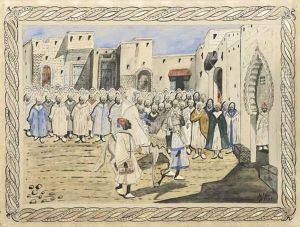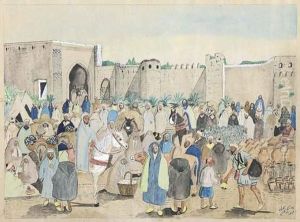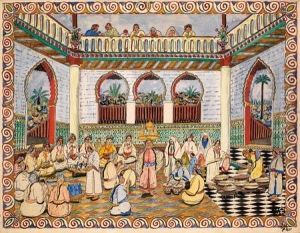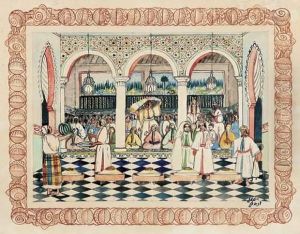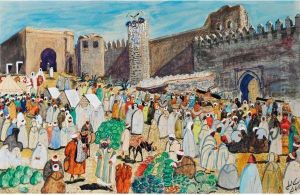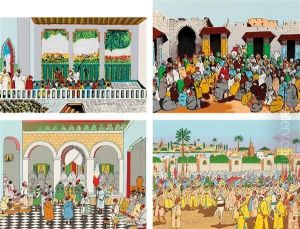Mohammed Ben Ali R'Bati Paintings
Mohammed Ben Ali R'Bati was a Moroccan painter who played a significant role in the history of Moroccan art, marking a period of transition and cultural exchange between Morocco and Europe. Born in 1861 in the bustling city of Essaouira, Morocco, R'Bati's artistic journey began in a context deeply rooted in the traditional Moroccan arts and crafts, yet his work would eventually bridge the gap between Moroccan and Western artistic traditions.
R'Bati's exposure to European art styles came through his interaction with foreign visitors and diplomats in Essaouira, a city known for its cosmopolitan flair even in the 19th century. This exposure was pivotal in shaping his artistic direction, allowing him to develop a unique style that incorporated traditional Moroccan motifs with European artistic techniques, particularly those from the Orientalist movement, which was popular among European artists of the time.
Despite the lack of formal art education available in Morocco at the time, R'Bati showed exceptional talent and an innate ability to capture the essence of Moroccan life and landscapes. His works often featured scenes from everyday life, including local markets, ceremonies, and landscapes, painted with a realism and detail that brought the vibrancy of Moroccan culture to life.
In the early 20th century, R'Bati's work began to receive recognition beyond Morocco, particularly in France, where Orientalist art was in vogue. His paintings were celebrated for their authenticity and beauty, providing a window into Moroccan culture for European audiences. This cross-cultural appreciation helped to elevate R'Bati's status as one of the first Moroccan artists to gain international acclaim.
Throughout his career, Mohammed Ben Ali R'Bati remained deeply connected to his Moroccan heritage, using his art to document and celebrate the rich cultural tapestry of his homeland. He passed away in 1939, leaving behind a legacy that continues to influence Moroccan artists today. His work not only serves as a historical record of Moroccan life at the turn of the 20th century but also as a testament to the power of art in bridging diverse cultures.
